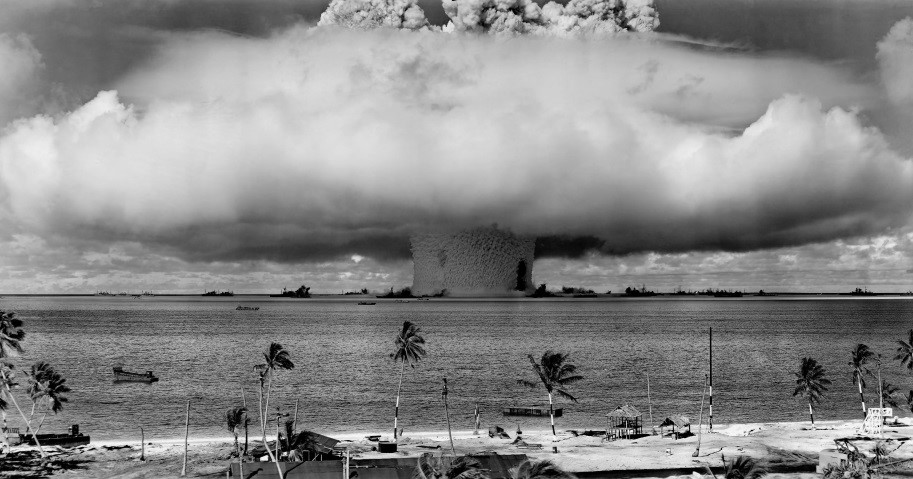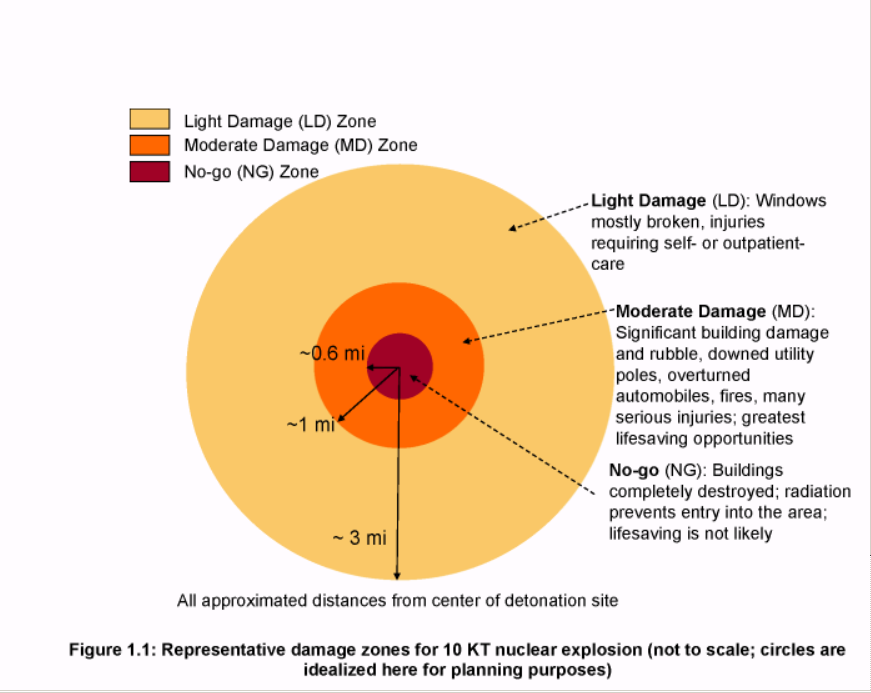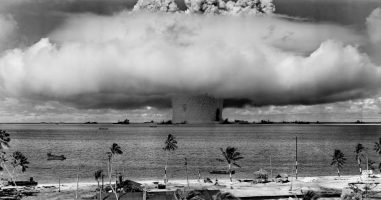Unfortunately, nuclear and radiological incident preparedness continues to be a timely and relevant topic, and while the recent events in Hawaii proved to be a false alarm, it is no reason for anyone to let their guard down. Current threats come from state-sponsored, military grade nuclear weapons; radiological dispersal devices (dirty bombs); and Improvised Nuclear Devices (IND). Focusing on an IND, this article will delve into an explanation of such an incident to help responders in their preparations, though many of the effects discussed also apply to state-sponsored, military nuclear weapons detonations.
An IND can be defined as any illicit nuclear weapon bought, stolen, or otherwise originating from a nuclear state, or a weapon fabricated from illegally obtained fissile nuclear weapons material to produce a nuclear explosion. Presenting a challenging scenario, an IND is designed by combining acquired nuclear material with explosives to create a nuclear detonation. Using an IND can produce the same physical and medical effects as nuclear weapon explosion. Even if a nuclear explosion is not achieved, an IND can serve as a radiological dispersion device, which would still have significant impacts on the nearby population.
When an IND explodes, a large fireball is created. This fireball vaporizes everything in its immediate area and carries particles upward into the atmosphere. This creates the familiar mushroom-shaped cloud. Following the explosion, the early minutes and hours of the response activities would be critical for saving thousands of lives. To further understand this concept, it is important to define the two primary impact types: Prompt effects and Fallout effects.

Prompt effects are those that occur as a result of the blast. They include light and thermal radiation, blast wave, shock effects, radiation in the first minute of fission, and the electromagnetic pulse. While there are no clear, distinct boundaries, explosive and pressure damage can generally be defined into three zones: severe, moderate, and light (assuming a 10-KT device detonation for the provided distances).
• The severe damage (or No-Go) zone is the area closest to the blast site. Damage in this area extends outward in a 0.6 mile (1 kilometer) radius from ground zero; structures in this zone are not likely to remain intact and chances for survival are minimal.
• The moderate damage zone covers a radius out to 1 mile (1.6 kilometers). Here, buildings and structures will have major damage, to include broken glass and partial destruction of buildings. For humans caught in this zone, early medical attention is critical to reduce the number of casualties.
• The light damage zone extends outward approximately 3 miles (4.8 kilometers) would have intact buildings with broken glass. Chance of survival in this zone is high, particularly for those people who were able to seek shelter during the blast and subsequently fallout.

The Fallout Effects are those that occur as a result of the cloud of radioactive dust following a nuclear detonation. As the material in the cloud cools, dust-like particles drop back to the earth. Since the fallout is radioactive and contaminates anything it lands on, the impacted area can be significantly larger than the immediate area, as it is carried by the wind and can land miles from the site of the explosion. For an example of how far fallout can be carried, one only needs to consider that volcanic ash is often carried hundreds to thousands of kilometers from its eruption by winds. Fortunately, fallout radiation decays very quickly and the first hours to days of the response activities will define how many people can be saved.
During the first hours, the fallout is a significant radiation risk to everyone in the vicinity. The primary hazard is from external exposure to the fallout particles, as the radiation can penetrate through walls and windows. Communicating to the public prior to an event is key. Sheltering the first 12-24 hours in a basement, or alternatively, the center most point in the building when there is no basement, can save many lives. Even if you are unable to get into a basement, any structure can and does shield people from radiation. The heavier and denser the materials – thick walls, concrete, bricks, books and earth – between you and the fallout particles, the better.
Due to fallout, there will be locations that emergency responders will not be able to enter in the early days of the response. Further complicating response efforts, an additional challenge to an IND event would be communications after the blast effects and of the potential electromagnetic pulse (EMP). During an EMP, electric fields and magnetic fields rapidly change and may create damaging current and voltage surges that effect communications, computers, and other electronics. Most significantly effected would be those areas in the prompt effect zones. Prior planning for reestablishing communications (e.g., secondary and tertiary methods) are critical.
For public messaging, using any available media to distribute critical information will be highly important. Considerations should include television, email, radio, text messaging, and social media, especially in advance of an event when possible. Planners should also consider options for communicating in areas where the infrastructure for electronic communications has been disabled or destroyed. Any remaining operational communications systems will be severely overloaded. Communications into and out of the impacted area via these systems will be extremely difficult. Radio broadcasts may be the most effective means to reach the people closest to and directly downwind from the nuclear explosion site. A recent example of total loss of communications can be seen in the aftermath of Hurricane Maria in Puerto Rico.
Lessons learned from all-hazards all-risk training and exercises are highly applicable to a nuclear detonation scenario. Pre-incident preparedness is essential to saving lives. This includes prior planning with mutual aid partners; first responders at the federal, state, and local levels, as well as private sector and Non-Governmental Organizations (NGOs); and planners in neighboring communities to identify gaps and solutions to improve capabilities. The time to make friends is not when you need a friend. Reach out early and often to keep those lines of communication open and ensure that everyone not only knows what would be needed in such an event, but trains and exercises to prepare for it. Contingency plans should be updated to incorporate lessons learned and improvement plans gathered from training and exercises as part of your continuous improvement cycle. Plans that sit on shelves serve no purpose but to collect dust.
After a nuclear detonation, public safety depends on the ability to quickly make appropriate safety decisions. Empowering people with knowledge can save thousands of lives. Messages prepared and practiced in advance are fundamental to conveying clear, consistent information and instructions during an emergency incident. When possible, planners would benefit by selecting individuals with the highest public trust and confidence to deliver messages and should be prepared to deliver key information to the public in the effected areas about protection almost immediately in order to maximize lives saved.
While there is no clear cut checklist for nuclear detonation scenarios, recognizing that routine training and exercising for all-hazards and all-risks incidents can better prepare you and your organization for such an event is critical. What are you doing today to prepare for that next incident? Are you prepared?
Since inception in 2000, EMSI has played a major role in helping government and industry clients alike, prepare, train, and respond to emergencies of any cause or size. Comprised of national and international all-risk, all-hazard response experts, EMSI’s seasoned cadre gives us a unique background and perspective in dealing with incident and responder needs at every level of government and industry, to include the international community. As a global response leader in all-risk, all-hazard, multi-discipline incidents, EMSI has a proven track record in helping the myriad of local, state, national, international, and private sector entities with their incident management and emergency management programs. EMSI is a veteran owned, minority business enterprise (MBE) that supports a broad range of clients. To learn more about EMSI and how we can help your organization’s response preparedness, please visit www.emsics.com.


